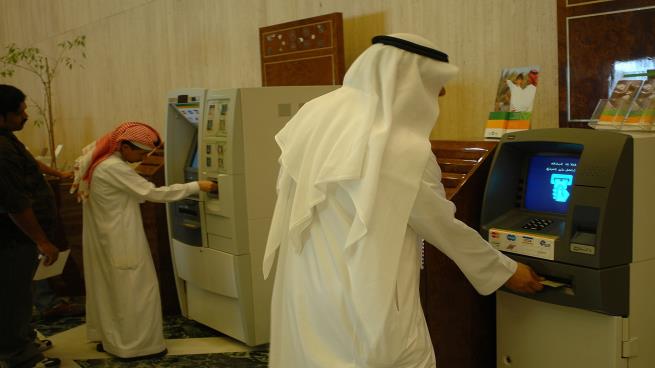
The Kingdom of Saudi Arabia is facing an acute liquidity crisis due to the drop in oil prices, forcing the Saudi regime to sell local banks a small percentage of the $7 billion bond they offered last week.
Reuters news agency reported that the Saudi government is planning to issue bonds denominated in local currency soon.
The agency added that the government did not allocate any bonds to the bank it works with and at least two other local banks, despite making large requests, and that the reason was probably because the government’s plans to maintain large liquidity between banks that can bear “beyond its capacity”.
The launch of the three-tier bonds came after Riyadh last month raised the debt ceiling to 50 percent of GDP instead of 30 percent to finance the growing deficit caused by lower oil prices and the economic slowdown caused by the Corona virus outbreak.
A source close to the Ministry of Finance said, “The allocations to local banks in this offering were at the minimum, the allocation was difficult as a result of the purchase orders book which was very large and of high quality.”
On Wednesday, the Kingdom sold through the Ministry of Finance bonds for five and a half years worth $2.5 billion and for ten and a half years worth $1.5 billion and for 40 years at three billion dollars.
A second Saudi banker, who asked not to be identified, said it was not announced that “the decision was taken to preserve the liquidity.”
The issuance of Saudi bonds came after an agreement was reached on April 12 between oil producers to reduce production, which may support the price of a barrel of crude, but it may reduce Riyadh’s revenues this year.
The cost of borrowing has risen after Gulf bonds declined last month due to lower oil prices and an outbreak of the Corona virus.
In March, the Saudi government announced that it had prepared a 50 billion riyal ($13.3 billion) package to help banks and medium-sized companies cope with the economic repercussions of the pandemic.
Despite this, some banks in the region are limiting lending to reduce potential losses from the crisis amid expectations of pressure on the supply of dollars.
In a recent research note, Goldman Sachs said that bank loan growth in Saudi Arabia is expected to reach about two percent in 2020, compared to eight percent in 2019, due to slowing corporate activities and project delays.
Finance Minister Mohamed al-Jadaan said last month that the budget deficit could widen to between seven and nine percent as a maximum by the end of the year, compared to a previous forecast of 6.4 percent.
On Wednesday, the Kingdom started marketing dollar bonds on three segments, with interest well above interest rates on US bonds, in which the Kingdom invests about $182.9 billion until the end of January.
The five-and-a-half-year bonds came at a rate of 3.15 per cent above the interest on US Treasury bonds, ten-and-a-half-year bonds at about 3.25 per cent, and forty-year bonds at about 5.15 percent.
Riyadh raised the debt ceiling to 50 percent of GDP from a previous level of 30 percent in March, while at the end of December of 2019 it was 24.1 percent.
The debt-to-GDP ratio has been increasing at record levels since 2015, reaching 24.1 percent at the end of last year, while it did not exceed 1.6 percent in 2014.
The Saudi regime announced last December the 2020 budget by spending $272 billion (less than in 2019), compared to revenues of $222 billion, anticipating a deficit of $50 billion, but financial analysts expect the deficit to double in the shadow of corona and the collapse of oil.
In a report issued last March, the International Monetary Fund warned against the extinction of the Kingdom’s fortunes in 2035, if it did not take “radical reforms in its financial policies” that are mainly based on oil revenues like the rest of the Gulf countries.